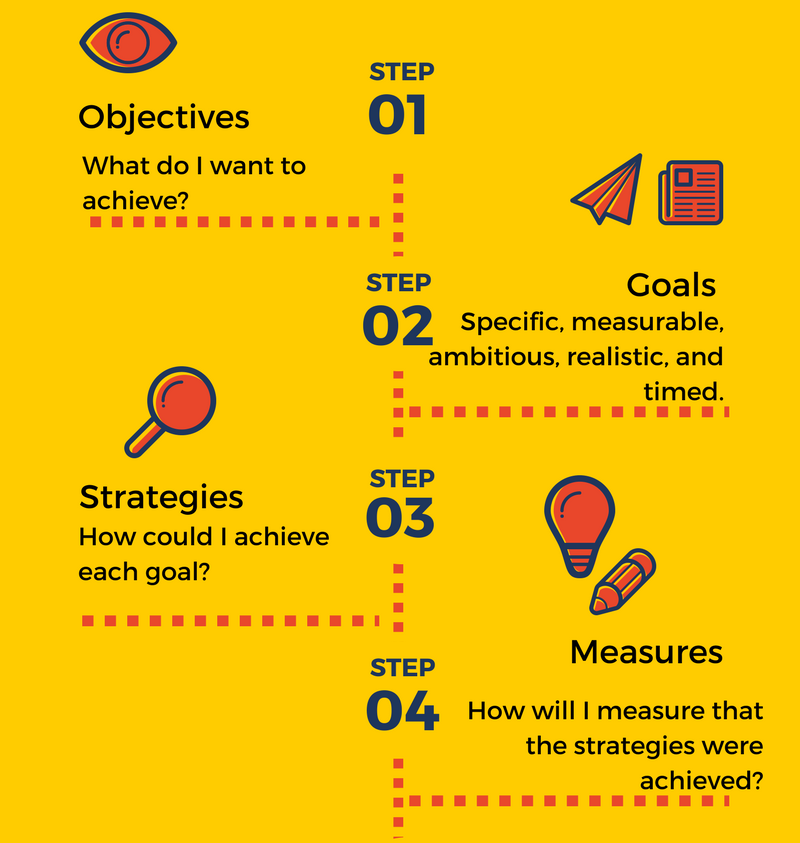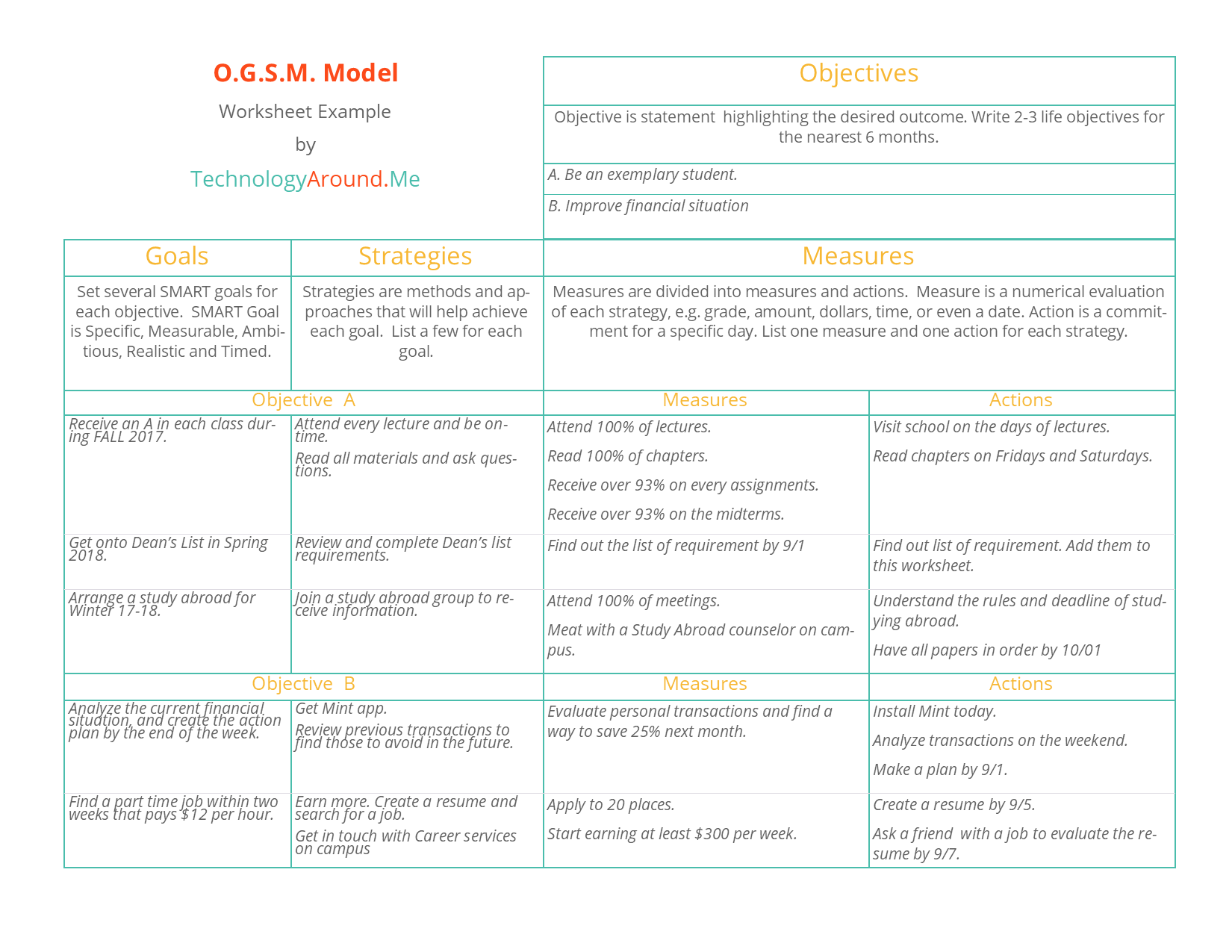The OGSM Planning Model: How to Move from Vision to Results
Leadership is the capacity to translate vision into reality. ~Warren Bennis
Looking at the people around us, we naturally notice those whom we can call “overachievers.” You know who I’m talking about. These people have it down! In other words, those are the people who can define and realize their vision.
Among the variety of planning tools, there is one that is designed to do just that – turn your vision into tangible results. Today, we are going to introduce this simple and effective planning tool. This planning strategy is called the OGSM model.
What Is the OGSM Planning Model?
OGSM stands for Objectives, Goals, Strategies, and Measures. The model is a single-page strategic planning tool. It is both comprehensive and easy to use. Its origin can be traced back to large corporations in Japan, who first started using this framework in the 1950s. Later, it was adopted by Procter & Gamble, Coca-Cola, and other multinational giants.
Principles of the OGSM model can be as effective for personal planning as for business planning. For example, this article illustrates how to use the OGSM framework to boost your career as an artist. This approach is adaptable to almost any setting.
The 4 Elements of the OGSM Process

You can see each part of the process mapped out in the figure below. Let’s review the elements of the OGSM process together. You might be already familiar with basic goal-setting. The advantage of the OGSM Model is its comprehensive approach. It systematically takes you from your vision to results.!
- 1. Objectives
The first step is to state your desired result. This part of the process answers the question, “What do I want to achieve?” It is also important to formulate your objective in a form of a positive statement.
Example: Be a good student.
- 2. Goals
Once the overall objectives are identified, set several goals for each of your objectives. The objective of being a good student can have several aspects, such as good grades, research experience, internship, study abroad, extracurricular activities, and other personal goals. Verify that your goals are SMART, that is they are:
Specific; Measurable; Ambitious; Realistic; and Timed Example: If your goal is to successfully finish the semester, this goal is not specific, measurable, or timed. To turn this goal into a SMART goal, it can be reformulated like this: Finish the Fall semester with a 3.7 overall GPA.
- 3. Strategies
At this stage, you need to list various strategies to achieve each goal. The question here is “How would you go about achieving each goal?” You probably already have a few ideas how you could start. Write down everything that comes to mind.
Example: Strategies to achieve the goal of finishing the Fall semester with a 3.7 overall GPA could include:
Attending each class. Completing all assigned homeworks. Being prepared for all exams.
- 4. Measures
In this section, you need to answer the question: “How will I measure that the strategies were achieved?”
Here is an example of a completed worksheet. You can print it out and refer to it when you are working on your own OGSM plan. In the example, there are two objectives – “Be an exemplary student” and “Improve my financial situation.” Then, goals, strategies, measures, and action items are created for each of the two general objectives.

 Action Steps:
Action Steps:
Review the examples above. Download and print the OGSM Planning Worksheet. Review an example, fill out your own worksheet, and start implementing your plan immediately.
Author: Tanya Ince
